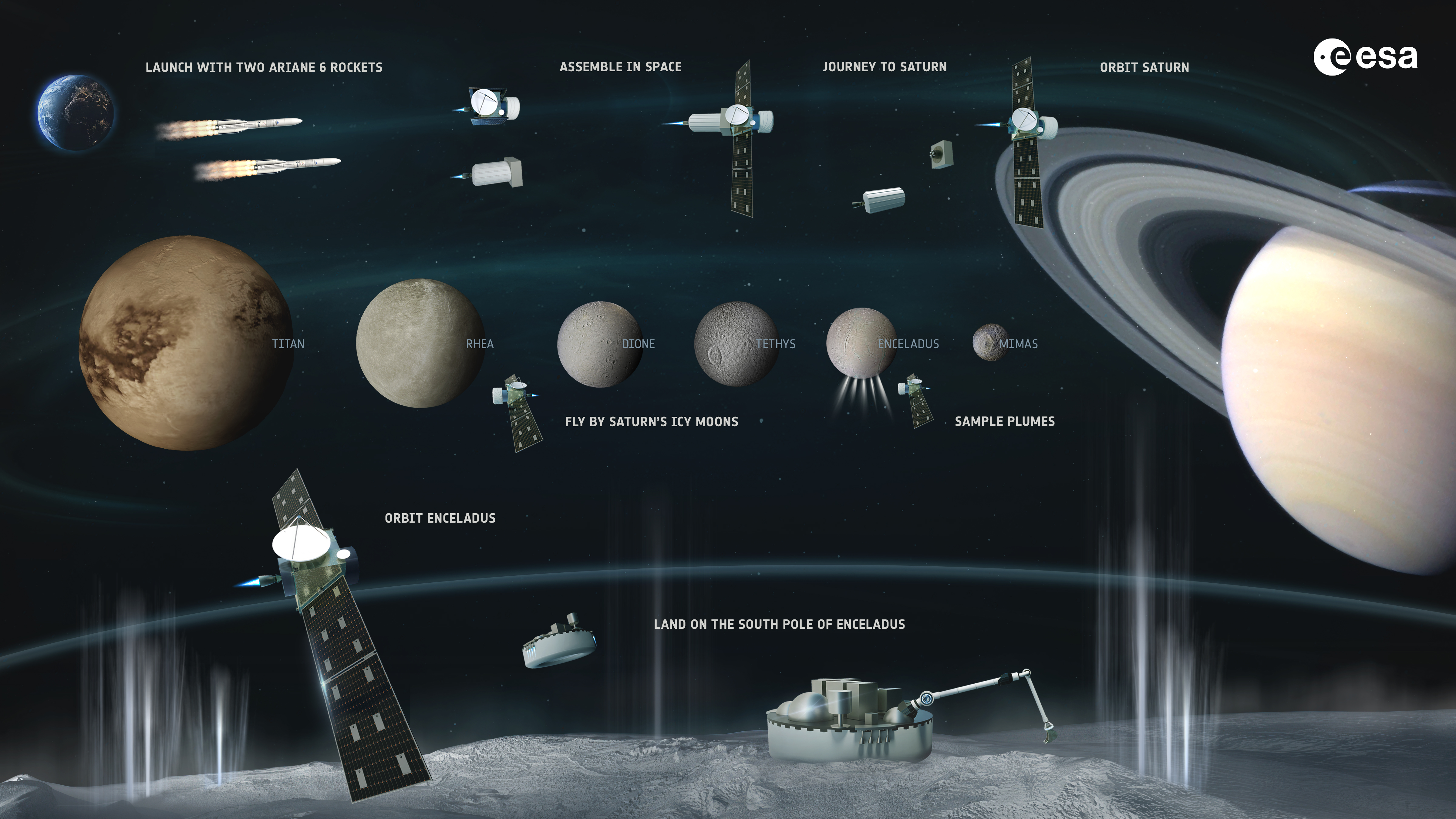It was exactly two decades ago that the Cassini mission discovered that underneath the surface of Enceladus, one of the icy moons of Saturn, there is a deep ocean. Thanks to the mission, we have learned that the moon is releasing geysers into space, forming another ring of Saturn: the E Ring. In those geysers, researchers found evidence of complex chemistry, and now they have clear proof that those molecules come from the ocean.
In previous data analysis, researchers found intriguing organic molecules. Some of them are prebiotic, meaning they are the building blocks of life-crucial molecules, such as amino acids, the components of proteins. These were from the E ring and the plumes emitted by the south pole of Enceladus. Particles in the ring can exist for hundreds of years, so it could be possible that these formed there due to solar radiation. Recent research suggested that complex molecules could form on the surface of Enceladus and then lift up into the plumes.
The latest analysis of the data instead confirms an oceanic origin. In 2008, the spacecraft flew through the plume, and one of its instruments, the Cosmic Dust Analyzer (CDA), was hit by ice grains moving at 18 kilometers (11 miles) per second. These were the fastest grains ever detected by Cassini, which means they were also the freshest.
That means that we now really have proof that there are prebiotic complex molecules in the ocean of Enceladus!
Dr Jörn Helbert
Cassini was a joint collaboration between NASA, the European Space Agency (ESA), and the Italian Space Agency. Years after its final dive into Saturn, it continues to deliver surprises. It took a while to analyze the signals; the CDA was not designed to study the icy plumes of a moon, but rather the dust in the Saturnian system. Still, thanks to careful work, researchers have reconstructed the signals belonging to a wide variety of molecules containing carbon, nitrogen, oxygen, and more.
“We knew that there were prebiotic molecules in the E Ring of Saturn; we have seen this from our observations. We have seen some of that also in the plumes of Enceladus,” ESA spokesperson Dr Jörn Helbert told IFLScience.
“But this is now the first time that they are actually seen deep down in the plumes. This is the first time they are really linked to the ocean of Enceladus. That means that we now really have proof that there are prebiotic complex molecules in the ocean of Enceladus!”
Enceladus is the one place where we can actually touch the water from the ocean, and that for me is absolutely amazing.
Dr Jörn Helbert
This is an amazing discovery for the potential habitability of the moon’s ocean. The Cassini observations have shown that Enceladus has a deep ocean, it has hydrothermal activity, it has chemistry, and now we know there are complex molecules.
“You have liquid water, you have an energy source, you have the chemistry, and you have complex probiotic molecules. Basically, you have everything that you need to form life,” Dr Helbert told IFLScience. “If life forms, that’s a different question, but at least we have all the ingredients that you need. This makes Enceladus THE target if you want to look at a habitable world outside of Earth!”
ESA is planning to go back to Enceladus with a dedicated mission. Well, a double mission. There will be a spacecraft orbiting the moon and a lander that will touch down on the south pole, in the region of the so-called Tiger Stripes where the plumes are released. Unlike other icy moons, thanks to the geyser, we have access to the ocean without having to drill for tens of kilometers.

A proposed mission to Enceladus being planned by ESA.
Image Credit: ESA
“Enceladus is the one place where we can actually touch the water from the ocean, and that for me is absolutely amazing,” Dr Helbert told IFLScience.
The mission, which is still being planned, is not scheduled to reach Saturn until the mid-2050s – and for once, it is not about funding or bureaucracy. For this to be a success, the lander needs to get plenty of sunlight, and the best time to land with fewer eclipses is around then.
Extrapolating back, we are looking at a launch in the early 2040s, and less than a decade before the design and details of this mission are approved. Yes, it is a long time, but the payoff of studying directly an alien ocean makes the wait worthwhile.
It would be worthwhile whether we find life or not. If we do, we’ll answer a major scientific question. If we don’t, we will have to consider in even more detail what makes Earth special.
The study, led by Nozair Khawaja, is published in the journal Nature Astronomy.
Source Link: Proof Of Complex Organic Molecules In Enceladus’s Ocean: “You Have Everything You Need To Form Life”